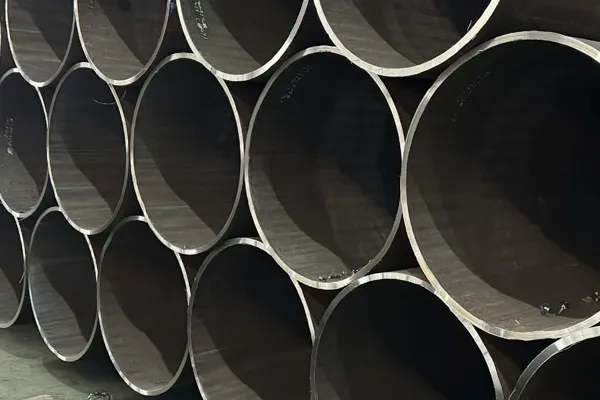In long-distance pipeline construction, the cost of line pipe typically accounts for 35% to 40% of the total project investment. Therefore, choosing high-quality, reasonably priced pipe is crucial. A wise pipe selection can reduce construction costs, simplify installation, and ensure the safe operation of the entire pipeline system.Among various options, LSAW (Longitudinal Submerged Arc Welded) pipes have become the preferred choice for many large-scale pipeline projects worldwide. Compared with other types, such as spiral welded pipes or ERW (Electric Resistance Welded) pipes, LSAW pipes offer superior performance and reliability.
LSAW pipes are steel pipes made using the longitudinal submerged arc welding process, which offers superior weld quality and high strength. This welding method ensures a strong, reliable pipe, making it suitable for high-pressure applications, such as long-distance oil and gas pipelines. The pipes are typically larger in diameter and are manufactured with high precision, ensuring they meet the rigorous demands of pipeline construction.

Common Types of Pipes Used in Pipeline Construction
Typically used for diameters up to Φ406.4 mm in domestic markets. Japan has developed ERW pipes up to Φ508 mm.
Often used for larger diameters, but many countries, especially in Europe, have gradually phased them out due to structural weaknesses.
LSAW Pipes
Preferred for large-diameter, high-pressure oil and gas pipeline projects due to their excellent mechanical properties and welding quality.
Why Choose LSAW Pipes for Long-Distance Pipelines?
Here are the key advantages that make LSAW steel pipes ideal for long-distance pipeline construction:
1. Superior Surface Quality
LSAW pipes skip the uncoiling process, which reduces surface indentations and scratches on the base material.
2. High Dimensional Accuracy
With controlled slit alignment and perimeter, LSAW pipes offer excellent welding precision and consistency.
3. Minimal Residual Stress
Post-weld pipe expansion eliminates most residual stress, improving safety and long-term performance.
4. Fewer Weld Defects
The straight seam design means shorter welds, which lowers the probability of welding defects.
5. Easy On-Site Welding
After expansion, the pipes maintain excellent geometric accuracy, making field welding more efficient and reliable.
6. Better Corrosion Coating
Straight weld seams have less impact on anti-corrosion coatings, ensuring longer pipe life in corrosive environments.
Global Trends: LSAW Pipes vs. Spiral Welded Pipes
In recent years, the use of spiral SAW pipes in long-distance pipelines has decreased significantly. Many countries have even banned spiral welded pipes from being used as mainline pipes due to structural concerns.By contrast, LSAW pipes are widely adopted in oil and gas pipeline projects in North America, Europe, and Asia. Their robust structure and high-performance characteristics make them the go-to solution for engineers and project managers.
Conclusion
For any large-scale pipeline project, pipe selection is a critical decision. LSAW pipes provide unmatched advantages in terms of strength, safety, and long-term reliability. Their widespread adoption in global infrastructure projects is a testament to their quality and performance.If you're planning a pipeline project and seeking the most reliable solution, LSAW pipes are the industry standard for a reason.






 English
English Español
Español بالعربية
بالعربية











 Phone :
Phone :  Whatsapp :
Whatsapp :  Email :
Email : 


